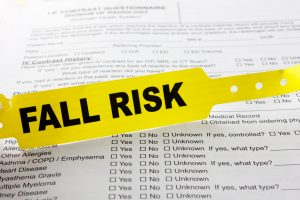
One-fourth of older Americans over the age of 65 will experience a fall, and roughly every 11 seconds in the U.S. an older American is rushed to the ER as a result of a fall. Falls account for over 2.8 million injuries treated in emergency departments each year. In 2013, falls cost the healthcare system $34 billion. This number is expected to increase drastically by the year 2020 as the American population continues to age.
Even if falls do not lead to a disability, they can still have a negative impact on a person’s life, raising the risk of anxiety and depression, limiting social engagements, and even causing a fear of future falls. It’s important that seniors and caregivers take the necessary steps in order to reduce the risk of falls and keep seniors safe.
Electronic prescription of high-risk medications may contribute to falls in elderly
Certain medications are considered a high risk for seniors and can contribute to a higher risk of falls among this age group. The study included 287 people over the age of 65 who experienced a fall. The study found that 62 percent of falls occurred in patients taking high-risk medications that were administered up to 24 hours prior to the fall.
In 57 percent of the cases, particularly in the cases of benzodiazepines and benzodiazepine-receptor agonists, the dosages were higher than recommended.
Senior clinician author Dr. Rosanne Leipzig explained, “Before the widespread use of electronic prescribing, physicians had to consciously determine the appropriate drug dosage for an individual. This study highlights that with electronic prescribing, default doses do matter and lowering defaults for vulnerable patient groups such as elderly patients may be an easy way to reduce inappropriate use of high-risk drugs for these patients.”